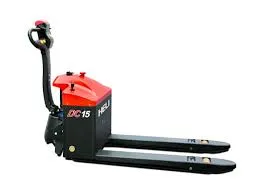


Electric Winch Design A Comprehensive Overview
Electric winches are essential tools used in various industries for lifting, pulling, and securing heavy loads. Their applications range from construction and mining to recreational activities like boating and off-road vehicle recovery. The design of an electric winch requires careful consideration of various factors to ensure efficiency, safety, and reliability. This article outlines the key elements involved in electric winch design, including mechanical components, electrical systems, control mechanisms, and safety features.
Mechanical Components
The mechanical design of an electric winch is critical to its performance. The main components include the drum, motor, gearbox, and housing. The drum serves as the reel that holds the winch cable or rope. It must be robust enough to withstand the tension exerted during operation. The motor provides the power needed to drive the winch, and the gearbox translates the motor's high-speed rotation into the lower speeds needed for lifting heavy loads.
When selecting the drum size and material, considerations include the type of loads to be lifted and the winch's maximum pulling capacity. Common materials for drums include steel and aluminum, both offering distinct advantages in terms of weight and strength. Additionally, the gearbox must be designed to handle the torque produced by the motor, necessitating a careful balance between gear ratios to maximize efficiency and minimize power loss.
Electrical Systems
The electrical system of an electric winch includes the motor, wiring, battery, and control unit. The choice of motor is pivotal; common options include DC motors for their simplicity and AC motors for their efficiency in continuous operation. The electrical design must ensure adequate power supply, including selecting appropriate cable sizes to minimize voltage drop during operation.
Control systems can range from simple switches to advanced wireless controls, allowing for more flexibility and safety during operation. Designing a user-friendly interface is crucial, as operators must be able to control the winch quickly and intuitively, especially in critical lifting situations.
Control Mechanisms
Control mechanisms play a significant role in the winch's operation. Many modern winches utilize microcontroller-based systems that allow for programmed controls, offering functions such as overload protection, automatic load sensing, and even remote operation capabilities. The integration of sensors can enhance safety by preventing the winch from operating beyond its rated capacity.

Additionally, incorporating features like dynamic braking ensures that loads can be held securely when the winch is not in operation, which is vital for safety during lifting tasks. Control mechanisms must also be designed with redundancy in mind, ensuring that failure in one component does not lead to a loss of functionality.
Safety Features
Safety is paramount in the design of electric winches. The following features are integral to ensuring operator safety and minimizing the risk of accidents
1. Overload Protection This feature prevents the winch from operating beyond its designed capacity, reducing the risk of equipment failure.
2. Emergency Stop Button A readily accessible emergency stop button allows operators to quickly halt the winch's operation in case of an emergency.
3. Limit Switches Installing limit switches can prevent overtrave through automatic shutdown when the cable reaches its maximum extension or retraction.
4. Mechanical Fail-Safe Incorporating a mechanical brake can provide an additional layer of safety, ensuring that loads remain secure even if there is a power failure.
Conclusion
The design of electric winches involves a comprehensive approach that integrates mechanical, electrical, and safety considerations to create reliable and efficient lifting solutions. By thoughtfully addressing each of these elements, engineers can develop electric winches that meet the diverse demands of various industries while ensuring the safety of operators and the integrity of equipment. As technology advances, we can anticipate further innovations in electric winch design, enhancing their capabilities and applications in the future.



